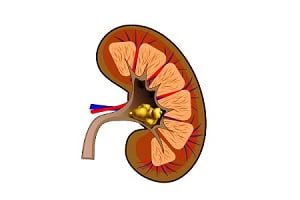
The rate of technological advancement is increasing very rapidly with time which has led cell biologists to develop tissue samples in the laboratory. It altered our understanding of how cells grow and how they interact with the disease. Essentially, it allowed researchers to test drug treatments on living cells before administering them in a human body.
Although tissue samples grown in petri dishes (shallow cylindrical glass or plastic covered dish that biologists use to culture cells) are two dimensional; they are a poor replacement for the solid organs in our bodies. So scientists have recently started to grow in three-dimensional cells. The globules of tissue they generate are known as organoids (they are neither fully-functioning organs nor mere sheets of cells). There are organoids of heart, kidney, liver, breast, retina and brain tissue etc.
Stem cells could lead to salivary gland regeneration
Scientists at Showa University School of Dentistry in Tokyo and the RIKEN Center for Biosystems Dynamics Research have successfully cultivated three-dimensional salivary gland tissue for the first time and implanted it into mice. The organoids produced saliva like normal glands. When people lose some organ function due to disease or injury, it would be an ideal condition to simply regrow the lost organ.
Kenji Mishima of Showa University, whose lab performed these mouse experiments, says “It was incredibly exciting to see that the tissues we created actually functioned in a living animal. This is an important evidence that organoids are a valid alternative to actual organs.” Mishima and Takashi Tsuji of RIKEN are now making an attempt to grow salivary glands from human stem cells. They are looking forward to transplanting a human organoid in a patient with dry mouth condition very soon possibly within a year.
Silk leading to salivary gland development
Another research team led by Chih-Ko Yeh, B.D.S., Ph.D., from The University of Texas Health Science Center at San Antonio, is the first to use silk fibers as a structure to grow stem cells into salivary gland cells. They have submitted their work for a patent.
Yeh is a professor in the Department of Comprehensive Dentistry. His lab mainly focuses on research of salivary gland. A team of researchers, led by Dr Chih-Ko Yeh, has been exploring for cell-based analysis to repair salivary gland function and his research was published in the Journal of Tissue Engineering Part A 2015; 21(9-10).
Saliva is important to achieve good health. It is a fluid substance that is formed in the mouth and secreted by salivary glands. It helps with speaking, swallowing and washing food off the teeth, initial food digestion and also prevents oral infections. Insufficient saliva production may cause chronic bad breath, cavities, gum disease, and systemic infections. According to the study, there is no treatment for non-functioning salivary glands, though these glands have a little regenerative capacity.
According to the study, it is very difficult to grow salivary gland stems cells in culture while retaining their function. During the study, the silk fibers were purified by removing the contaminants. The stem cells on the silk framework were added with a media to nourish them. After a few weeks, these cells produced a 3-D matrix covering the silk scaffolds. The newly produced cells had many similar characteristics to salivary gland cells that are present in the mouth.
Silk is a good choice for stem cell staging as it is biodegradable, flexible, natural and porous substance, which allows conduction of oxygen and other useful nutrients required by growing cells. Usually, it does not lead to an inflammation.
Since there are very few salivary glands stem cells present in the human mouth, Yeh and his research team decided to use the rat model to refine their process. Typically, researchers would like to utilize stem cells derived from bone marrow or umbilical cord to regenerate salivary glands in human patients. In fact, these scientists have established several procedures for harvesting large numbers of bone marrow stem cells and human umbilical cord blood and growing them in cell culture. These stem cells may differentiate into different cell types by employing tissue engineering techniques.
Future aspects
Ideally, within the next decade, it is believed that tissue-engineered artificial salivary gland will be used to instigate salivary gland regeneration in human beings to speed up tissue repair, or to replace lost glands. This is believed to hold potentially useful opportunities for treating diseases and conditions such as dry mouth, salivary gland cancer etc.






